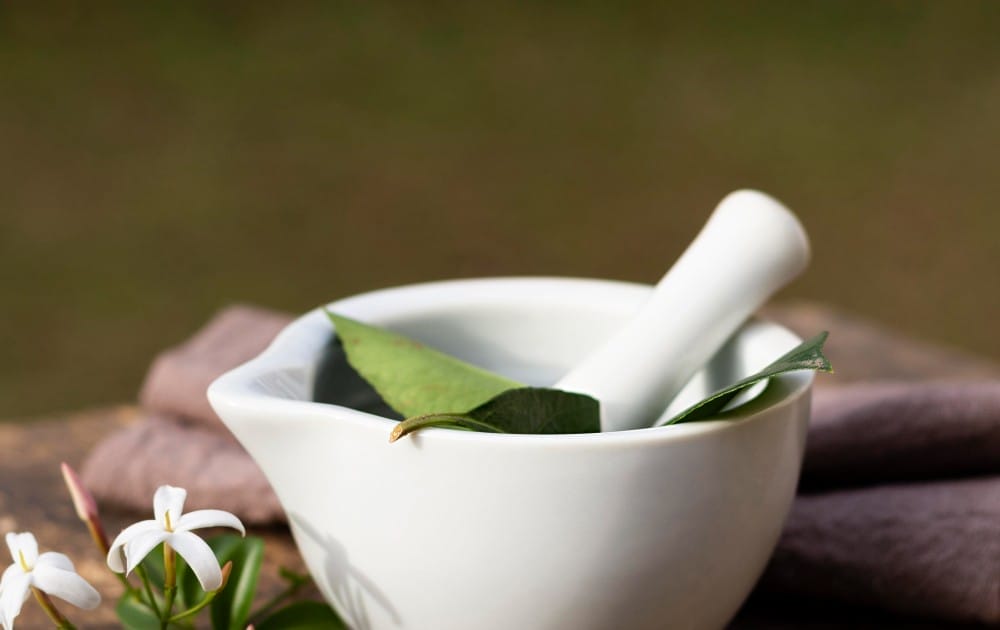Brihati (whose scientific name is Solanum indicum) is an extremely important medicinal plant with extensive usage in Ayurveda. In Hindi, it is commonly known as Badi Kateri and Vanabhanta whereas in English it is commonly referred to as Poison Berry, African Eggplant, Bush Tomato, and Indian Nightshade. It is one of the 10 roots (coming under Laghu Panchamula) of the famous Dashmula or group of 10 roots, making it a powerful formulation to treat inflammatory conditions.
Brihati and Ayurveda
In the traditional medicine system of Ayurveda, Brihati refers to the dried root of the plant Solanum indicum, which is an extremely prickly, several-branched perennial undershrub that is found predominantly in warmer regions of the country up to an elevation of nearly 1,500 metres. Traditionally, Brihati is used to treat respiratory disorders, such as dry and spasmodic cough, catarrh and asthma, dropsy, cardiovascular diseases, colic, chronic fever, infestation of worms, difficulty in urination, and scorpion stings.
When it comes to medicinal purposes, the fruits of this plant are also used as they have excellent antipyretic, analgesic, anti-inflammatory and CNS (Central Nervous System) depressant properties. What’s more, Brihati is considered as one of the best herbal remedies for conditions such as common cold and sore throat. It serves as an excellent herbal appetiser, diuretic, and digestive, with ample benefits for the heart.
The roots and fruits of Brihati are comprised of fatty acids, wax and alkaloids (such as solanine). The fruits of the plant are an excellent source of phosphorus.
Ayurvedic Properties and Mode of Action
In Sanskrit, Brihati means big or extended. The plant is pungent and bitter in taste (Rasa), hot in effect (Virya), and pungent after digestion (Vipaka). It is an Ushna Virya or hot-potency herb that subdues the Vata Dosha (Wind) and Kapha Dosha (Mucus), and increases the Pitta Dosha (Bile).
How to Use Brihati Plant
Mentioned below are some of the most common ailments and health conditions for which the Brihati plant is highly efficacious. In addition, the part of the plant that must be used is also mentioned along with the required combination of herbs and ingredients.
Asthma, Bronchitis, Cough: Decoction made from the roots is beneficial.
Alopecia: Juice of the fruit, which is mixed with honey and applied externally.
Enhanced Erection: Application of a paste made from the seeds.
Bronchitis with Fever: Prepare a decoction of the roots of the Brihati plant along with Justica Adhatoda, Solanum xanthocarpum, Sida cordifolia, and raisins (one part). Filter the decoction and consume.
Cough: Pound the fruit and fry in butter. Consume this orally. Alternatively, root juice mixed with honey may also be consumed to relieve cough.
Diarrhoea in Young Children: Fruit extract (with the spine removed), when combined with breast milk, is administered to infants.
Complications During Labour: Root decoction is recommended.
Fever: Combine 24 grams each of Brihati, Amalaki (Indian gooseberry), Shunthi (dry ginger), Giloy and Nagarmoth. Powder the mixture and divide into five equal parts. One part should be consumed daily in a decoction with a dash of long pepper and honey.
Gastric and Abdominal Problems: Obtain the root extract of Brihati by rubbing it using a stone. Mix this extract with rice water and consume it orally twice daily for 4-5 days.
Health Tonic: A potent health tonic can be obtained by preparing a decoction of the plant’s roots.
Intestinal Worms: Consume the raw fruit after removing the spine.
Ringworm and Itching: Apply a paste obtained from the plant topically.
Rheumatism: Intake the extract obtained from the root and the fruit.
Scabies (Kacchu): External application of the Juice obtained from the plant.
Urinary Problems – Dysuria (difficult or painful urination) and Ischuria (reduction or stoppage in the flow of urine): A decoction derived from the roots needs to be taken twice daily. The dosage should be half a teacup.
Dosage
- 5-6 grams of Brihati are used to prepare an ideal decoction: boil the dried, coarse powder in 1 glass of water until it reduces to half a cup. The decoction is now ready. Filter this and consume.
- The root and fruit powder is consumed in dosages ranging from 1-2 grams.
The Final Word:
Brihati has a wide range of medicinal uses from relieving symptoms of common cold and cough to alleviating gastric disorders and difficulty in urination. The roots of the Brihati plant have rich medicinal properties. A better understanding of these properties will help in the better utilisation of this herb.





















